Are you frustrated that no one will link to you? Have you tried all of the basic link building methods like email outreach to find out that none of them are working for you?
Don’t worry, we’ve all been there.
Everyone says you need to write amazing content to build links. And although that helps, what if I told you it isn’t a requirement.
Yes, link building is hard, but not impossible.
And if you are struggling to build links, here are the tactics you need to follow… even if your website, product, or content aren’t as good as your competition, these tactics will work.
Tactic #1: Link Intersect
If you email a site asking for a link, the chances are they are going to ignore it. I get these requests all the time… and I ignore them too.
But on the flip side, if you emailed someone that linked to 3 or 4 of your competitors there is a good chance they will also link to you.
When someone links to a few of your competitors, this tells you that they don’t mind linking to sites within your industry and that they are more open to linking to more sites as they already link to 3 competitors.
So how do you find sites who link to at least 3 of your competitors?
The way you do this is by heading over to Ahrefs and selecting their “Link Intersect” feature (it is under the “more” navigation menu option).
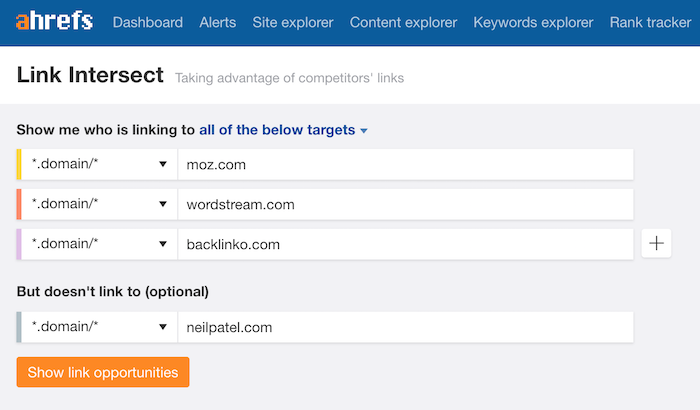
You’ll want to enter your 3 closest competitors and then your domain at the bottom. This will generate a report of sites that link to your competition but not you.
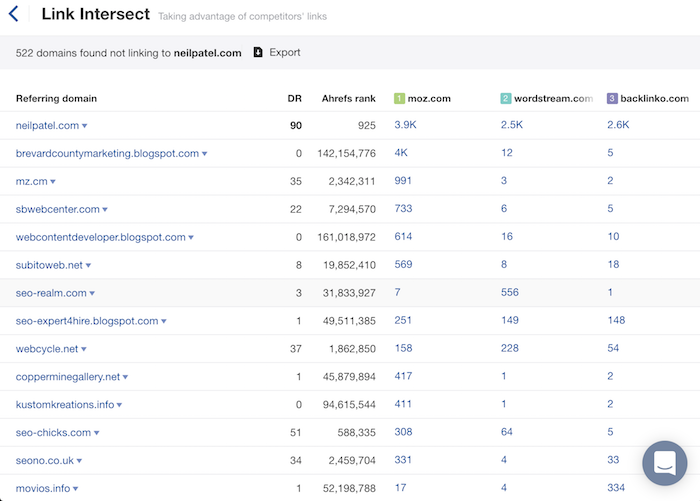
From there you’ll want to drill down to specific pages to see what pages are linking to your competition.
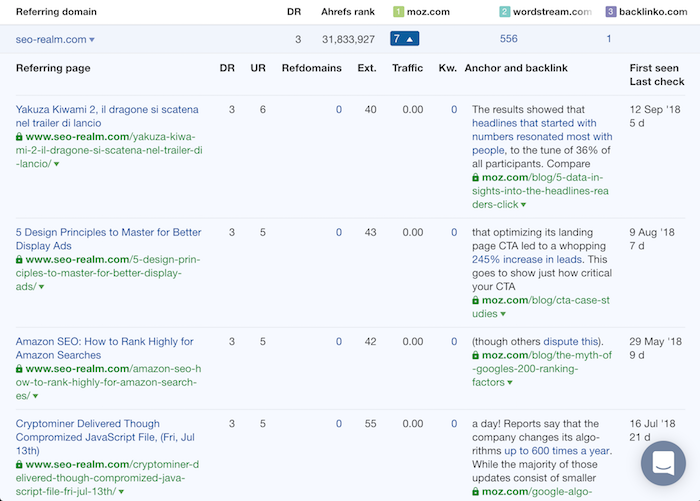
As you find common sites that link to a few of your competitors, you’ll have to dig in to figure out in what context they are linking out.
For example, if someone is linking to your all of your competitors’ blogs in a resource page, you have to make sure you have a blog before hitting them up. Because if you don’t, why would they add you to the list?
Once you find a handful of sites that are a good fit, you should email the site owner, build a conversation, and then ask for a link.
Here’s an example that my team used for a site that I own:
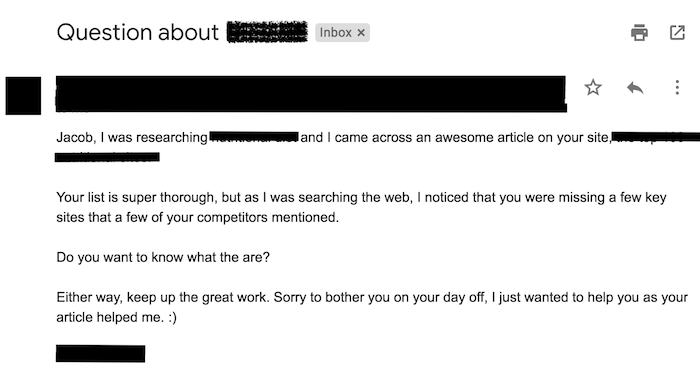
And here was the response we got:
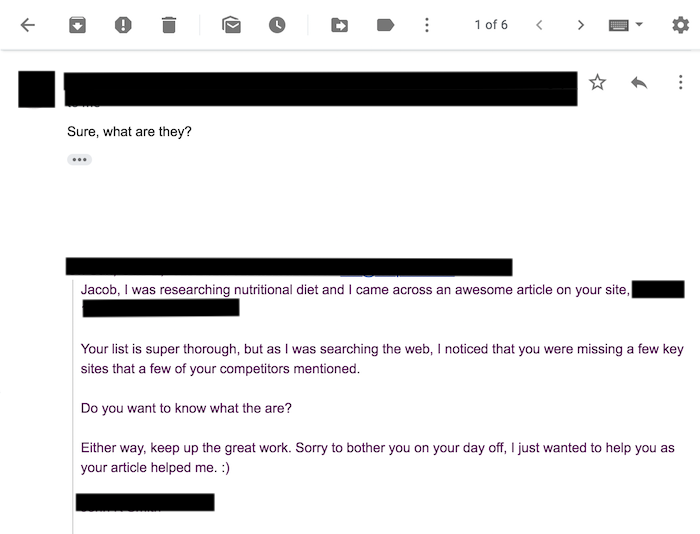
We use this tactic at scale. For every 100 websites that we emailed we picked up 9.7 links. We got this ratio for sites in a competitive niche and we aren’t using my name.
Tactic #2: Image link building
People love images… just look at social networks like Instagram. They’ve built a multi-billion-dollar company by encouraging people to take more photos.
As you’re blogging, you should consider using custom images on your site. If you aren’t a great designer, no worries, you can just use tools like Canva. Or if you have a bit of money to spend, you can always head to Fiverr and spend a few bucks paying someone to create custom images.
A good example of this is how I created a handful of custom graphs about Facebook for this blog post. The graphs look something like this:
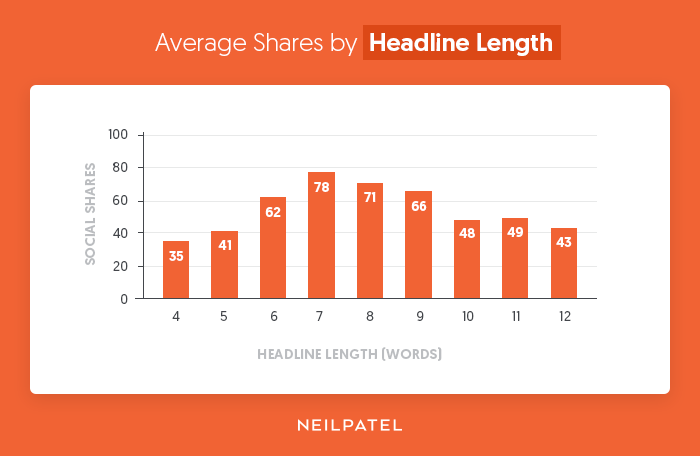
Over time, you’ll notice that other sites will take your images without linking to you. This may sound bad, but in reality, it is great because you can reach out to each of those sites and tell them to give you credit and link back.
Note, I am not telling you to “ask,” I am telling you to enforce that they need to link back to you.
Here’s how you find all of the people who have taken your images.
First, head over to Google Image Search. Once you land there, click on the camera icon.

Once you click it, you’ll see a box that looks like this:
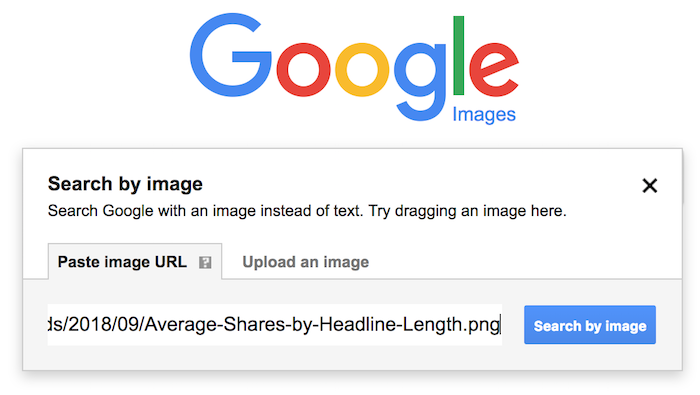
From there you will either want to paste in the URL with your custom image or upload it. And once you hit search you’ll see a list of sites who have taken your image.
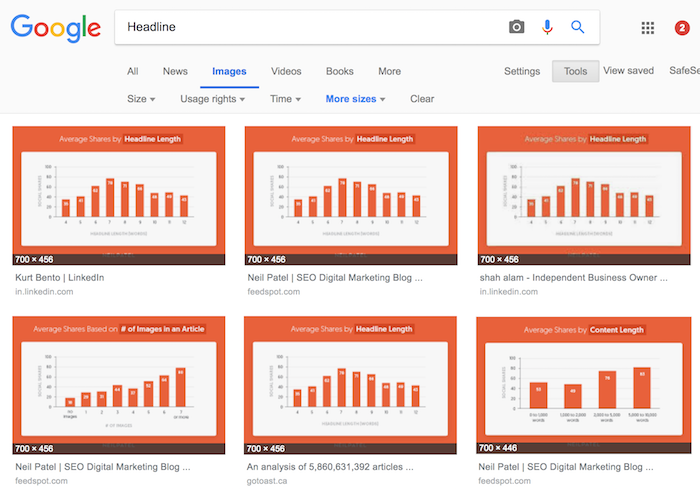
Some of these sites will have linked to you while others may have not. For the ones that have not linked to you, email them something that goes like this…
Subject: Copyright infringement – [name of their site]
Hey [their first name],
I noticed on this url [insert the url on their site that has used your image without linking back] you used an image that I created, and the rights of that image are owned by me.
I don’t mind you using it, but please link to back to [URL on your site where the image could be found] and give me credit. I spent a lot of time and money creating the images on my site, and I would appreciate it if people knew that it was originally created by me.
Please make this change in the next 72 hours.
Thanks
[insert your name]
Out of all of the link tactics mentioned in this post, this one has the highest success rate. It’s close to 100%.
If you email someone and they don’t link back, try them a few more times.
As your site grows in popularity, more people will steal your images, which will make it easier to build backlinks.
Tactic #3: Link reclamation
As your website gets older, you’ll notice that people will naturally mention you and your company. But when they mention your company name they won’t always link to you.
So why not email all of these people and ask them to turn the mention into a link?
It’s a simple strategy, and it works really well.
Just think of it this way, if someone has mentioned you or your company without you having to convince them, it typically means they already like what they see.
So, when you email them, not only will they feel flattered, but there is a high probability they will respond as well.
This means it will be easy for you to convince them to link to you.
But when you shoot off the email, I highly recommend that you also share the content that mentions you on the social web and let them know that you did this.
Here’s an example email:
Subject: I’m honored, thanks [insert their first name]
Hey [insert their first name],
I’m flattered! I really appreciate you mentioning me on your site [insert link to the article that mentions you but doesn’t contain a link].
I just wanted to let you know that I shared your article on Twitter to show my appreciation.
On a side note, I would appreciate it if you adjusted the mention of my name, “[insert your name]” and turned it into a link that pointed people to [URL of your site].
Cheers,
[insert your name]
PS: Let me know if I can do anything for you
Your success rate should be well over 50%. For me, my rate is close to 83%, but again a lot of people in marketing know who I am, so your success rate will be lower.
The key to leveraging this tactic is to email people right when they publish a post that mentions your site but doesn’t contain a link.
If you ask people to add a link to a post that is older than 6 months, you’ll find yourself generating only 1 link for every 5 or 6 emails you send.
In other words, if you want a high success rate, you need to be on top of it. The easiest way is to create alerts using Buzzsumo.
Just sign in and click on “monitoring.” Then click on “create new alert.”
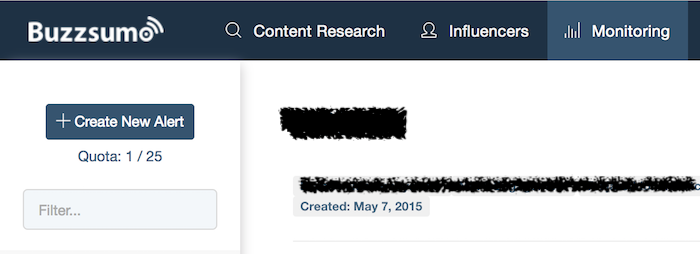
Then click “brand mentions.”
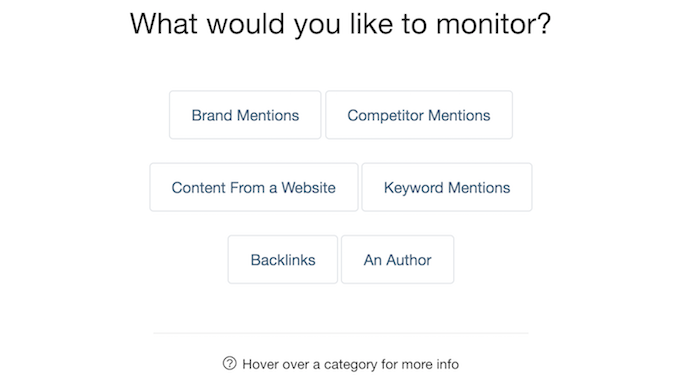
Fill out the name of your site or company. Make sure you also add any misspellings.
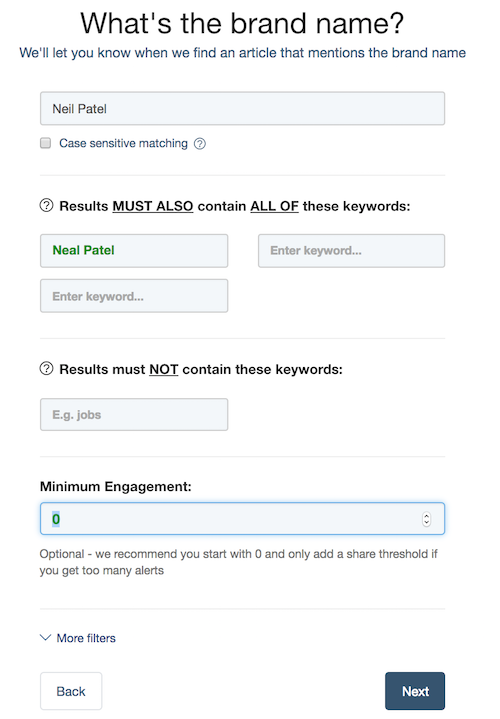
Select how you want to be notified anytime someone mentions you.
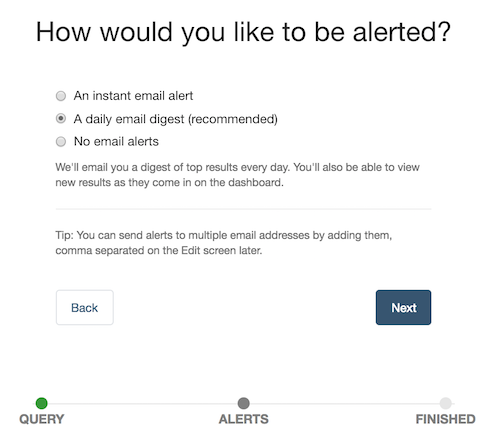
Click finish, and you’ll then see a see a report that shows you how many mentions there are over the last week, month or even 2 months. As well as a list of sites that mentioned you.
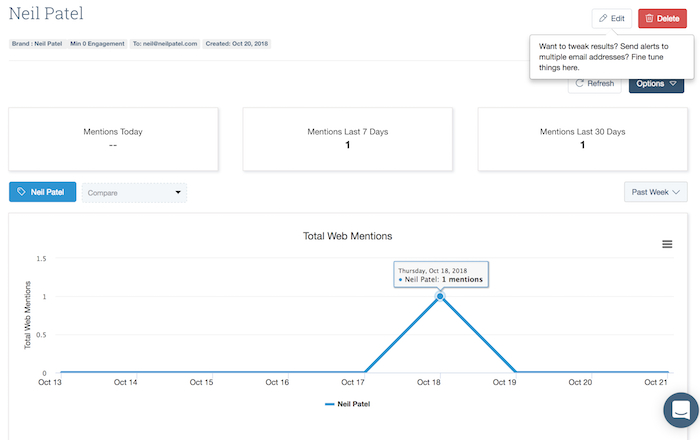
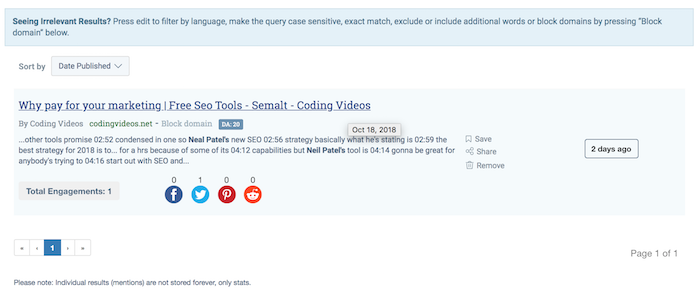
Again, I can’t emphasize this enough, but you should try and email people within 24 hours of having a brand mention. That’ll give you the highest chance of generating a link.
Tactic #4: Performance-based press
Do you want mentions on sites like TechCrunch and Entrepreneur? And no, I am not talking about guest posts.
Well, of course, you want to be mentioned on those sites. But how?
There are companies like PRserve that offer performance-based press. If they get your press, then you pay. If they don’t, you won’t spend a dollar.
The cool part about PRserve is that it is a real legitimate PR agency. They don’t sell links, they aren’t familiar with link building, and they don’t leverage author accounts or guest posts. They pitch editors to write about you and your company.
These editors will either say yes or no. If they say no, again, you don’t pay a dollar. If they say yes, PRserve charges you a performance-based fee that ranges depending on the site (you’ll negotiate this rate with them in advance).
Now, there is one big thing to note about PRserve. There is no guarantee that when they get you an article there will be a link to your company. For example, if they convince TechCrunch to blog about you, there is no guarantee that TechCrunch will link to your site. They will mention you, but again there is no guarantee of a link.
But if you take this strategy and combine it with tactic 3, you should easily be able to turn that mention into a link.
As for all of the tactics, this one is my favorite. The reason being is that it drives revenue.
When sites like Venture Beat and TechCrunch cover you, expect to get more leads, sales, and traffic.
The guy I’ve dealt with at PRserve is named Chris. He typically knows before taking on a project what he can produce and how long it will take. As a heads up, things move a bit slow, but that is because he is actually pitching editors of big publications who tend to have busy schedules.
Tactic #5: Infographics
You’ve heard me talk about infographics before, but this tactic has a slight spin.
See, whenever you create content (whether it is blog posts, videos, podcasts) there is no guarantee that it will do well.
Here’s a screenshot of some my latest blog posts…
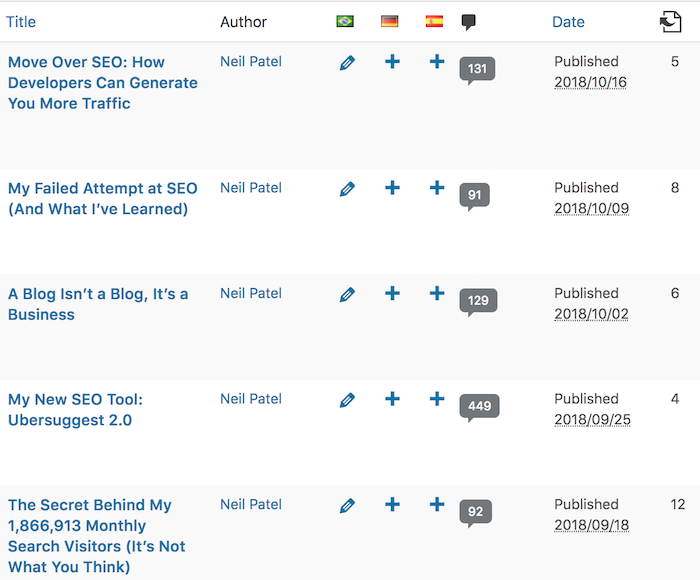
As you can see from the image above, some posts have done much better than others. You can tell by the number of comments on each post (the higher the comment count, in general, the more popular the post was).
Can you guess why some posts have done better than others?
I put in a lot of time to each of my posts, so that’s not it. To be honest, no one really knows the answer. Content marketing tends to be a hit or miss, in which some of your content will do really well and others won’t.
You are going to have many more misses than hits, which is why I am about to explain a strategy that will only produce hits (at least from a link perspective).
I want you to go to Ahrefs, click on “content explorer,” and type in keywords related to your space.
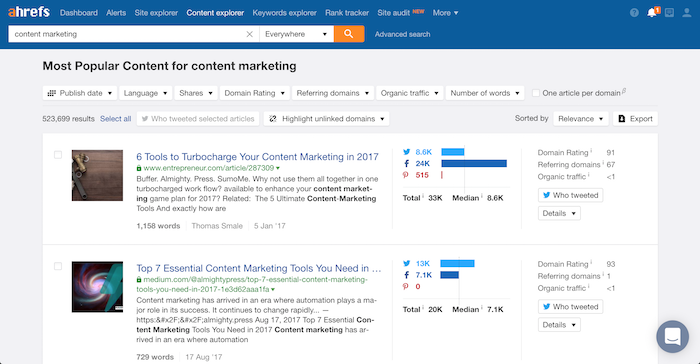
Ahrefs will show you all of the popular articles based off of social shares and links. Look for articles that contain at least 100 backlinks.
Here’s an article I found in the content marketing vertical that has over 3,600 backlinks.
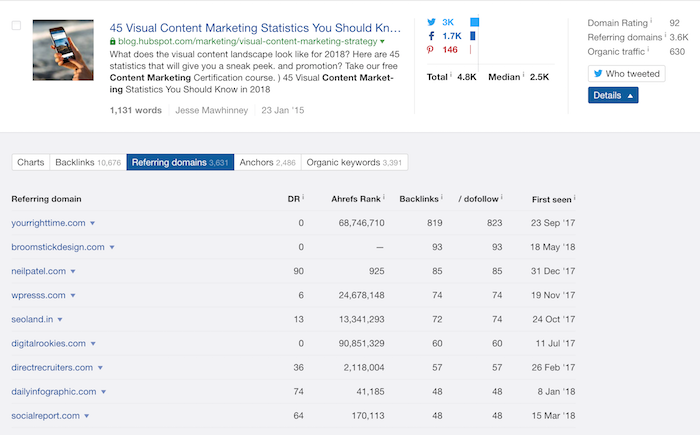
What’ll you’ll want to do is read that post and turn it into an infographic.
You’ll need to cite the original source. You can easily do this by adding their logo to the footer of the infographic and include the text “data provided by.”
If you don’t know how to create an infographic, you can pay people on Fiverr or you can use tools like Infogram.
Once you create the infographic, publish it on your blog and, of course, link to the original source. Now you’ll want to email each of the sites that linked to the original article and mention how you have turned it into an infographic. You’ll even want to give them the embed code.
The email would go something like this…
Subject: I think you need to see this
[insert their first name], would you agree people are more visual learners?
Well of course you do. We all tend to learn better from looking at visuals than reading text. 🙂
I noticed you linked to [insert the article they linked to] and I get why. It is an amazing resource for your readers. I also enjoyed it, which is why I turned it into an infographic.
[insert link to your infographic]
If you think it will help your readers digest the information, feel free to embed it within your blog.
Oh, and if you are wondering where you linked to [name of the article they linked to], it’s here [URL of on their website that links out].
Cheers,
[insert your name]
PS: Let me know if I can do anything for you.
This approach to link building requires a bit of work, but it works really well. The reason being is you are taking out the guesswork of what people love.
As long as you pick informational articles that can be turned into infographics and these articles have at least 100 links, you’ll be able to generate links.
Again, I can’t emphasize this enough, but you need to go after articles with at least 100 links. Some of the sites linking in will be junk and not everyone will embed your infographic… so going after a site with 100 links, in general, should help you build 16 or 17 links.
If you also don’t know how to create an embed code for your infographic, just use this WordPress plugin.
A good working example of this strategy is this science of social timing infographic we created. The data was originally gathered by Dan Zarrella. We just turned it into a visual graphic. This strategy helped me generate 1,070 backlinks.
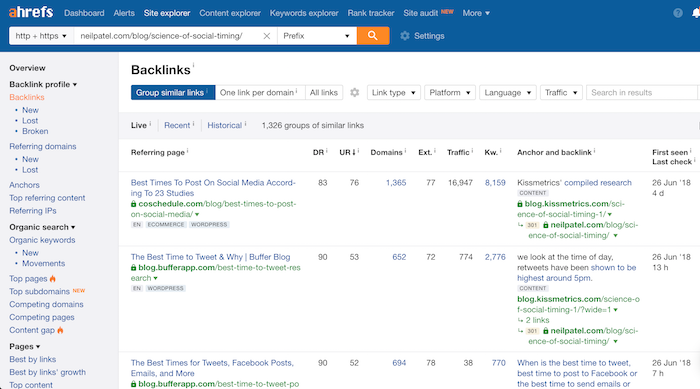
Tactic #6: Moving Man Method
Do you know how many businesses shut down each year? I don’t know the exact number, but it has to be a lot because 7 out of 10 businesses fail.
When these businesses shut down it opens up a lot of link opportunities… hence broken link building exists. But today I’m not going to teach you about broken link building as you are already familiar with it.
Instead, I am going to share with you a similar strategy, that has a slight twist, called the Moving Man Method. It was created by my friend, Brian Dean and it has helped him generated high domain authority links.
If you want to leverage the Moving Man Method, you need to find businesses who:
- Changed their name
- Stopped updating resources
- Discontinued products and services
- Are slowly letting their business die as they are running out of money
- Have announced that they are going out of business (but haven’t yet)
Brian used this strategy to get a DA 87 link.
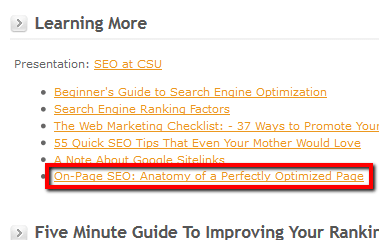
If you want to leverage the Moving Man Method you need to first find sites within your space that have done one of the 5 things above.
For example, in the marketing space, Search Engine Watch used to be a popular research site within the marketing community, but since they got bought out years ago the current owners haven’t done much with it. The business isn’t doing well, and they don’t put much time into it.
And Blueglass was once a popular SEO agency until they shut down their main US operations. Here are some sample emails Brian sent to gain links.
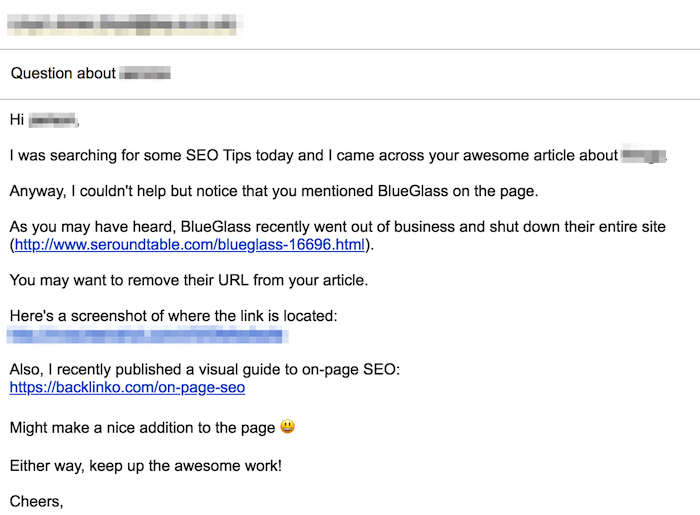
In most cases, people respond because you are helping them ensure their site stays up to date by not linking to URLs that won’t benefit their readers and, secondly, you are giving them a new option to link to, so they don’t have to waste time finding a replacement.
And here’s the response Brian got:

This strategy works similar to broken link building. All you have to do is take the link that meets one of the 5 requirements above and put it into Ahrefs.
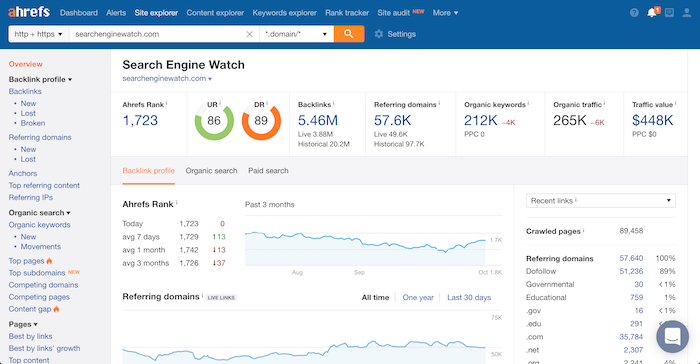
Conclusion
I know link building is hard. I’ve been where you are today. You spend countless hours trying to build links, but for some reason, you just can’t convince anyone to link to you.
No matter how tempting it sounds, don’t take shortcuts by buying links. Focus on long-term strategies as it will ensure that you will do better in Google in the long run.
And if you are struggling, start off with the first tactic I mentioned in this post. It tends to be effective and you can leverage it at scale.
Tactic 2 and 5 take a bit more effort, but they also work really well. For example, the infographic I showcased in tactic 5 has more backlinks than the original article. 😉
Tactic 3 and 4 also work, but they won’t generate you hundreds of backlinks. You should still leverage them as the more links you get the better off you are. You just have to be patient with these two.
And lastly, tactic 6 works well too, but you can’t always control the timing. Reason being is you have to wait for sites within your industry to meet one of the 5 requirements I gave you in tactic 6.
If you are struggling to build links, use all of these tactics. They work well and you’ll notice results within 30 days.
Are you struggling to build links? Have you tried any of the tactics I mentioned above?
The post How to Build Links When No One Will Link to You appeared first on Neil Patel.
from Blog – Neil Patel https://ift.tt/2PPhSMJ

No comments:
Post a Comment